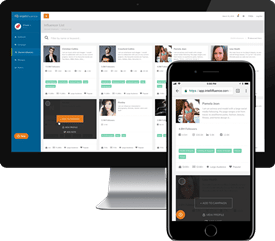Influencers today are expected to do more than create engaging content. Brands increasingly look for collaborators who can also ensure their posts reach beyond an organic following. One of the simplest tools available to achieve this is Instagram boosting, a feature that allows creators to promote existing posts directly within the app. But does boosting an Instagram post work? The answer is nuanced. Boosting can certainly enhance visibility and strengthen influencer–brand partnerships, yet it comes with caveats that creators need to understand before diving in.
What Is a Boosted Post on Instagram?
Before exploring the benefits and pitfalls, let’s define the term. What is a boosted post on Instagram? In short, it’s a regular post—something you’ve already shared on your feed—that you pay to promote to a wider or more targeted audience. Unlike ads built through Meta’s Ads Manager, boosting is streamlined: a few taps inside the Instagram app, a budget, a timeframe, and an audience selection, and your post becomes a paid ad.
For influencers, this means the ability to take a piece of content—perhaps a product review, a lifestyle reel, or a partnership announcement—and ensure it lands in front of more eyes, including people who don’t yet follow them. Influencers can get their content in front of brands by joining Intellifluence for free and adding their social profiles, including Instagram, to their accounts. Brands will be able to see latest Instagram posts, as well as audience and engagement data. Therefore, it pays to have a high quality Instagram account established.
Why Boosting Can Help Influencer Partnerships
Increased Reach and Impressions
Organic reach on Instagram has steadily declined. Even influencers with large followings know that only a fraction of their audience sees each post. Boosting ensures that the brand collaboration gets more impressions, which can reassure partners that their campaign spend is delivering value.
Targeted Audience Expansion
Boosted posts can be targeted by demographics such as age, gender, and location, or by interests. For example, a beauty influencer in Los Angeles might boost a skincare brand’s campaign specifically to local audiences interested in clean beauty. This not only pleases the brand but also introduces the influencer to potential new followers.
Proof of Partnership ROI
Brands love metrics. Boosting produces hard numbers: reach, clicks, engagement rates. When influencers can provide these results in post-campaign reports, it demonstrates professionalism and accountability—qualities brands prioritize in ongoing partnerships.
Repurposing Existing Content
Unlike creating new ad creative, boosting leverages content that already resonates. If a particular reel is organically performing well, putting ad dollars behind it amplifies success. This shows brands that the influencer understands how to identify winning content and maximize exposure.
The Flip Side: Why Some Say “Don’t Boost”
Not all creators are fans of boosting. In fact, you’ll often hear warnings that it’s a waste of money compared to running full-fledged ads. Here’s why:
Low-Quality Traffic
Boosting can drive likes, follows, and even clicks, but many influencers report that the traffic is “surface level.” Followers gained from boosting might not be genuinely interested in the influencer’s niche, leading to low engagement long term.
Limited Control
Compared to Meta Ads Manager, boosting is simplified—but that simplicity is also a limitation. You can’t A/B test creative as easily, run multiple ad sets, or take advantage of more advanced optimization tools.
Lack of Strategy
The biggest critique is that boosting is often used without a clear plan. Some influencers boost posts simply because engagement dipped, hoping money will fix it. Without defining goals (e.g., drive website clicks vs. gain local followers), the spend often delivers disappointing results.
Possible Damage to Engagement Rates
If boosting attracts audiences unlikely to interact beyond an initial click or like, future posts may suffer from algorithmic deprioritization.

Featured Influencer: Cynthia Gordillo Rodríguez
Soy zapatera y me dedico a forrar zapatos y a hacer transformaciones, mis redes sociales muestran mis procesos de trabajo y recientemente he conseguido una comunidad que ya supera los 108 mil seguidores en instagram y 37 mil en tik tok.
Over time, this can erode the very engagement rate that brands value most.
Requirements You Should Know Before Getting Started
Not everyone can hit the “boost” button right away. Instagram requires a few steps:
- Convert to a Business or Creator Account
- Boosting isn’t available for personal profiles. Influencers need to switch to a Business or Creator account through Instagram settings. This also unlocks Insights, giving access to analytics brands expect.
- Connect to a Facebook Page (Optional but Recommended)
- Linking accounts allows for better ad management and more robust targeting options.
- Ad Policy Compliance
- Payment Method Setup
- Influencers must attach a valid credit card or PayPal account to fund boosts.
How to Boost a Post: Step-by-Step
Boosting is designed to be accessible, even for those without marketing backgrounds. Here’s the process:
- Select the Post
- Go to your profile, choose the post you want to promote, and tap “Boost Post.”
- Choose a Goal
- Instagram provides three simple objectives:
- More profile visits
- More website visits
- More messages (direct engagement)
- Instagram provides three simple objectives:
- Define Your Audience
- You can let Instagram automatically select an audience similar to your followers, or you can create a custom one by choosing interests, age, gender, and location.
- Set Budget and Duration
- Decide how much you want to spend per day and how long the promotion should run. Even a $5–10 daily budget can meaningfully expand reach.
- Preview and Launch
- Instagram will show a preview of how your boosted post will appear in feeds or Stories. Once confirmed, the post enters review. If approved, it starts running immediately.
Best Practices to Consider
- Use Boosting to Support Partnerships, Not Replace Strategy
Boosting should complement, not substitute, a well-thought-out campaign. Decide in advance whether the goal is awareness, clicks, or conversions. - Boost High-Performing Posts Only
Don’t waste money on content that already underperforms. Boosting amplifies what’s working—it doesn’t rescue what isn’t. - Share Results With Brands
Screenshots of reach, impressions, and clicks help reinforce value in reports and strengthen your case for repeat partnerships. - Experiment Small, Scale Later
Start with minimal budgets and test different targeting approaches. Scale spending only once you see consistent results.
So, does boosting an Instagram post work? Yes—when used thoughtfully. For influencers, boosting is best seen as a tactical tool within a broader influencer marketing strategy. It can showcase professionalism, deliver measurable results for brands, and expand reach to new audiences. But it’s not a silver bullet. Without a clear goal, boosting risks wasting budget and even diluting engagement.
Ultimately, influencers who approach boosting with strategy, transparency, and alignment with brand objectives will stand out as stronger partners. Those who treat it as a quick fix may find the criticisms—low-quality traffic, lack of targeting control, and wasted spend—all too true.

SallyBot is committed to helping users get the most out of Intellifluence. By helping brands create campaigns, providing unparalleled customer service and offering useful advice, nothing makes SallyBot happier than hearing she is liked… Really, really liked.






